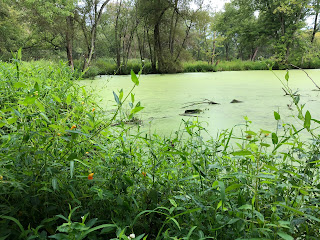We are getting into a more ‘home-like’ routine now that we’re off the road. For the past couple of days, we’ve been settling in to a very quiet neighborhood and the nice home that Uncle John has allowed us to use.
One activity that helps me get back to a familiar rhythm is a regular schedule of morning runs. This morning was the perfect opportunity to put in a Sunday long run. The string of consecutive days with high humidity and thunderstorms ended yesterday, and this morning dawned with the air temperature in the low 60’s.
Our house in Arlington is just over the Potomac River from the National Mall, so my goal was to get over to the U.S. Capitol and return before the holiday crowds arrived. I ran over to the nearby Custis Trail and followed it down to the river past Theodore Roosevelt Island and south toward the Memorial Bridge. The first thing I could see in the east was the Washington Monument, back-lit by the rising sun.
At this time in the early morning, you’re heading directly into the sun as you cross the bridge and enter the Mall near the Lincoln Memorial.
The Mall was quite serene in the early morning light.
Once I got to the Capitol and turned around to go back westward, I could see the nearly full moon still high in the sky. The tip of the Washington Monument reminded me of a seal balancing a ball on its nose.
Most of the museums are still closed. At the closed Hirshhorn sculpture garden, a scary sentinel blocked the entrance.
On the way out, I paid respects to Old Abe (as I always do when I visit) and got back on the trail back to Arlington.
After just under 13 miles, I climbed up onto the ‘sky porch’ to cool off and start the day.
Next: We shall see...


















































